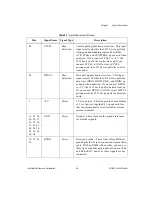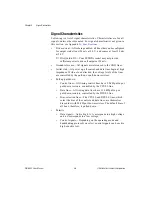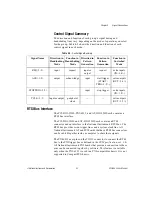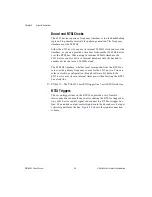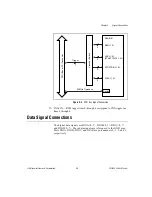
Chapter 3
Hardware Overview
© National Instruments Corporation
3-13
DIO 6533 User Manual
Controlling Line Polarities
If you cannot control the initialization order of the 6533 device and
peripheral device, you can still start a transfer reliably if you select the
polarities of the ACK and REQ lines so that the power-up, undriven
states of the control lines are the inactive states.
By default, the power-up, undriven state of the REQ and ACK lines is
low, due to the onboard 2.2 k
Ω
pull-down resistors. Therefore, you
should either select a protocol with active-high REQ and ACK signals
or use the CPULL bias-selection line or your own pull-up resistors to
change the power-up, undriven control-line state to high. See Chapter 4,
, for information on using the CPULL line to control
the 6533 device pull-up and pull-down resistors.
Transfer Rates
The maximum average transfer rate that the 6533 device can achieve for
two-way handshaking applications is the lower of the following two
rates:
• The peak handshaking rate from
, which can be lowered
by the handshaking speed of your peripheral device
•
The average available bus bandwidth, based on your computer
system, the number of other devices generating bus cycles, and
your application software
The maximum sustainable transfer rate the 6533 device can achieve for
pattern generation application is the minimum available bus bandwidth,
based on your computer system, the number of other devices generating
bus cycles, and your application software (this rate is always lower than
the peak pattern generation rate).
To achieve the highest possible rates, consider the following
information:
• Full, two-way handshaking is faster than pattern generation,
because two-way handshaking uses the average rather than the
minimum bus bandwidth.
• Burst mode is the fastest handshaking protocol, especially for short
cables.
• Your system bus should be as free as possible from unrelated
activity. Minimize the number of other I/O cards active in the
system.





















